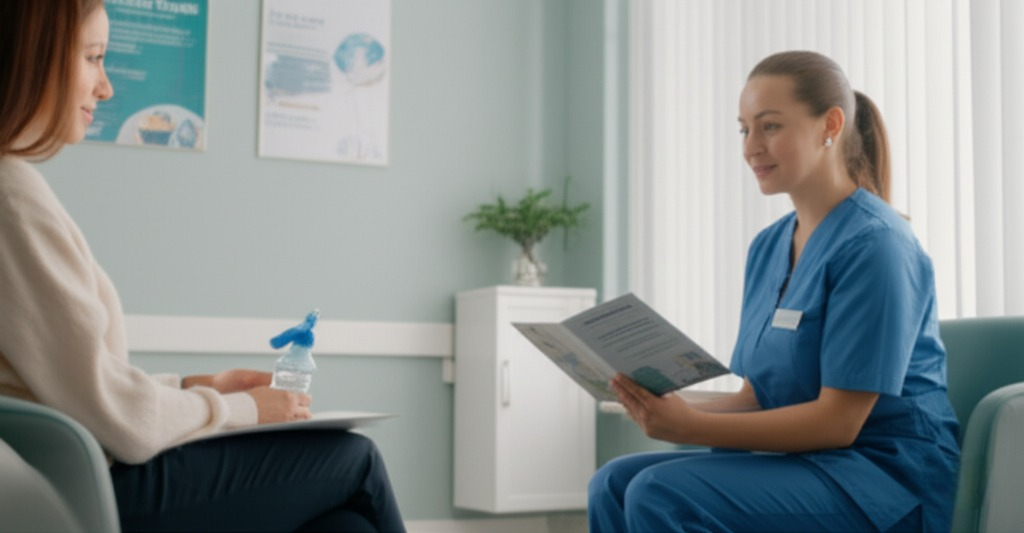The proactive management of your digestive health is paramount, and a critical step in this journey involves addressing abnormal growths known as polyps. These small tissue growths, particularly in the colon, are often benign but can, over time, develop into cancer if left untreated. Endoscopic polypectomy is a highly effective and minimally invasive procedure designed to safely and effectively remove these polyps during a routine endoscopy or colonoscopy. It's a cornerstone of preventative medicine, offering a direct pathway to safeguarding your long-term health and providing invaluable peace of mind. In this comprehensive guide, we'll explain how polyps are removed, what to expect during the process, and why this procedure is so vital.
Understanding Endoscopic Polypectomy
Endoscopic polypectomy is the medical procedure for removing polyps found on the inner lining of the digestive tract, most commonly in the colon (during a colonoscopy) or sometimes in the stomach or esophagus (during an upper endoscopy). The procedure is performed using specialized instruments passed through the working channel of an endoscope:
- Identification: Once a polyp is identified by the camera, the endoscopist chooses the appropriate technique based on the polyp's size, shape, and location.
- Removal Techniques:
- Forceps: Very small polyps can be simply grasped and removed with biopsy forceps.
- Snare: For larger polyps, a wire loop (snare) is advanced through the scope, placed around the base of the polyp, and tightened to cut it off. Electrical current (electrocautery) may be used (hot snare) to seal blood vessels and remove the polyp, or it can be removed without current (cold snare) for smaller polyps.
- Endoscopic Mucosal Resection (EMR): For larger or flatter polyps, a saline solution may be injected underneath the polyp to lift it, making it easier and safer to remove with a snare.
The removed polyp is then retrieved and sent to a lab for pathological analysis to determine its type and assess for any cancerous cells. This process is crucial for early detection and prevention.
What to Expect During the Procedure
Endoscopic polypectomy is typically performed as part of a diagnostic or screening endoscopy/colonoscopy, so the preparation and general procedure steps are similar.
- Sedation: You will receive sedation (ranging from conscious to deep sedation) to ensure you are comfortable and relaxed throughout the procedure. Most patients have little to no memory of the polypectomy itself.
- No Pain: There are no nerve endings in polyps, so you will not feel the actual removal. You may feel some mild cramping or pressure, similar to what might be experienced during the main endoscopy.
- Monitoring: Your vital signs will be continuously monitored by our experienced medical team, ensuring your safety during the entire process.
- Duration: The time taken for polyp removal is usually very short, often just a few minutes per polyp, adding minimally to the overall endoscopy duration.
“Endoscopic polypectomy is a game-changer in preventative medicine. By safely and effectively removing precancerous polyps, we can often stop colorectal cancer before it even begins, offering our patients the greatest gift: the gift of health and peace of mind.”
— Dr. Emilia Vargas, Board-Certified Gastroenterologist
Recovering from Endoscopic Polypectomy
Recovery after polypectomy is generally straightforward, but specific post-procedure instructions are important to follow.
- Initial Recovery: You'll be monitored in a recovery area until the effects of sedation wear off. You may experience mild abdominal cramping or bloating, which usually subsides quickly.
- Diet: You can typically resume your normal diet immediately after the procedure, unless advised otherwise. Your doctor might recommend a soft diet for a day or two, especially after larger polypectomies.
- Activity: Avoid strenuous activities, heavy lifting, and intense exercise for a few days to a week, depending on the number and size of polyps removed.
- Minor Symptoms: It's normal to experience a small amount of spotting or light bleeding in your stool for a day or two after colon polypectomy.
- Results: The results of the polyp biopsy will typically be available within several days, and your doctor will discuss these findings with you.
The Benefits of Our Endoscopic Polypectomy Services
- Primary Cancer Prevention: Directly removes precancerous polyps, significantly reducing the risk of colorectal cancer.
- Minimally Invasive: Performed during endoscopy, avoiding the need for open surgery.
- Safe & Effective: A well-established procedure with high success rates and minimal risks.
- Accurate Diagnosis: Removed polyps are analyzed to determine their type and cancerous potential.
- Peace of Mind: Provides reassurance knowing that potential issues have been addressed.
- Guaranteed Quality: All treatments are backed by our comprehensive guarantee for your complete assurance.
Your Next Steps for Endoscopic Polypectomy
If you have polyps identified during an endoscopy, or if you are due for colorectal cancer screening, endoscopic polypectomy is a crucial step in maintaining your digestive health. Schedule a consultation with our specialized gastroenterology team to discuss your individual needs, understand the procedure, and ensure proactive care for your long-term well-being.
Image Placement Suggestions:
- Hero Image at the very top (before the first paragraph) — e.g., a banner showing a magnified, clear image of a polyp being viewed inside the colon, or a stylized diagram of a healthy colon.
- In-Content Image between “The Benefits of Our Endoscopic Polypectomy Services” and “Your Next Steps for Endoscopic Polypectomy” — e.g., a graphic illustrating the process of polyp removal with a snare, or a close-up of endoscopic instruments.



























